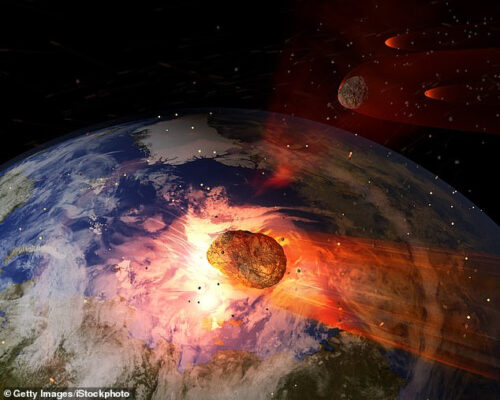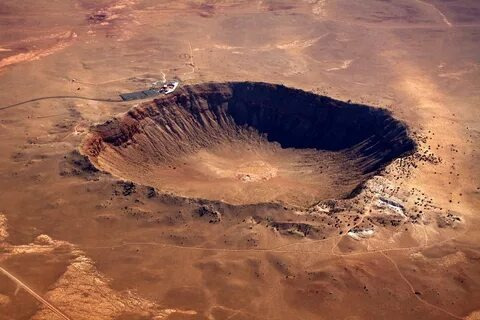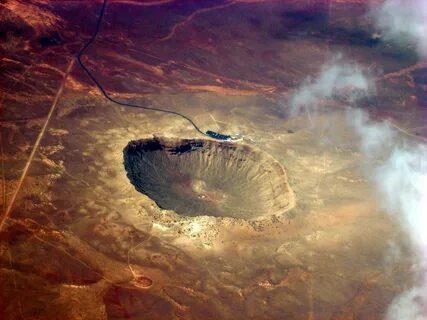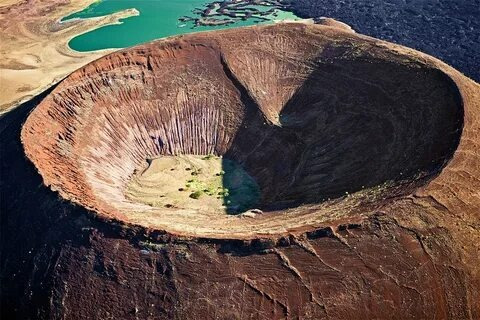
In a groundbreaking discovery, scientists have stumbled upon an astounding 8-kilometer wide asteroid impact crater off the coast of West Africa. Coinciding with this finding, a meteorite plunged into the waters of Mexico, causing a cataclysmic event that led to the extinction of dinosaurs. The study of the newly identified Nadir crater has the potential to provide crucial insights into the timing and effects of this catastrophic event that occurred millions of years ago.
Discovery of the Nadir Crater
Assistant Professor Uisdean Nicholson from Heriot-Watt University in the UK made a serendipitous finding while reviewing seismic survey data for a separate project.
This accidental discovery revealed the presence of the Nadir crater buried beneath approximately 400 meters of seabed sediment. The crater’s immense size indicates the tremendous force with which the asteroid collided with Earth’s surface, leaving a lasting impact on the planet’s geological history.

Understanding the Cataclysmic Event
The simultaneous occurrence of the Nadir crater’s discovery and the meteorite impact in Mexico presents an intriguing correlation. Scientists have long theorized that a large-scale asteroid impact caused the extinction of dinosaurs, but definitive evidence has remained elusive. This recent development opens up exciting possibilities for understanding the cataclysm that unfolded during that ancient era.
Impact on Dinosaurs and Other Life Forms
The collision of the asteroid or meteorite would have generated an enormous release of energy, resulting in widespread devastation.
The immediate effects included colossal tsunamis, catastrophic earthquakes, and devastating fires, which rapidly transformed the Earth’s climate. The subsequent global climate change, with a dramatic drop in temperatures and a decrease in sunlight reaching the surface, is believed to have caused widespread disruption to ecosystems, leading to the extinction of numerous species, including the dinosaurs.

Unveiling Earth’s Geological History
The study of the Nadir crater holds immense promise for unlocking Earth’s geological history during the period of the cataclysm.
By analyzing the layers of sediment surrounding the crater and the impact materials within it, scientists can gain valuable insights into the event’s precise timing, magnitude, and consequences. This information will aid in refining existing models of the asteroid impact and provide a clearer picture of how this extraordinary event shaped life on Earth.
Implications for Modern Times
Understanding past cataclysmic events can also shed light on potential future threats to our planet. By studying the characteristics of the Nadir crater and the impact it had on the Earth’s environment, scientists can refine their knowledge of how similar events might unfold and develop strategies to mitigate their potential consequences. This research can inform efforts to detect and track near-Earth objects, enhancing our ability to protect the planet from future catastrophic impacts.

The accidental discovery of the Nadir crater, coupled with the historical evidence of the meteorite impact in Mexico, marks a significant milestone in our understanding of the cataclysm that led to the extinction of dinosaurs.
The study of this massive impact crater promises to unravel the mysteries surrounding this ancient event, offering valuable insights into Earth’s geological history. As we delve deeper into the past, we also gain crucial knowledge for safeguarding our future. By applying the lessons learned from these catastrophic events, we can work towards protecting our planet and ensuring the continuity of life on Earth.
